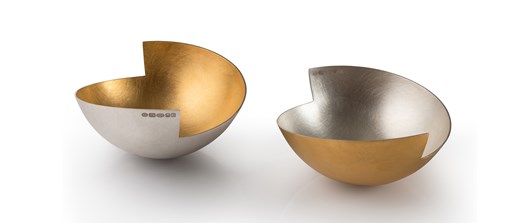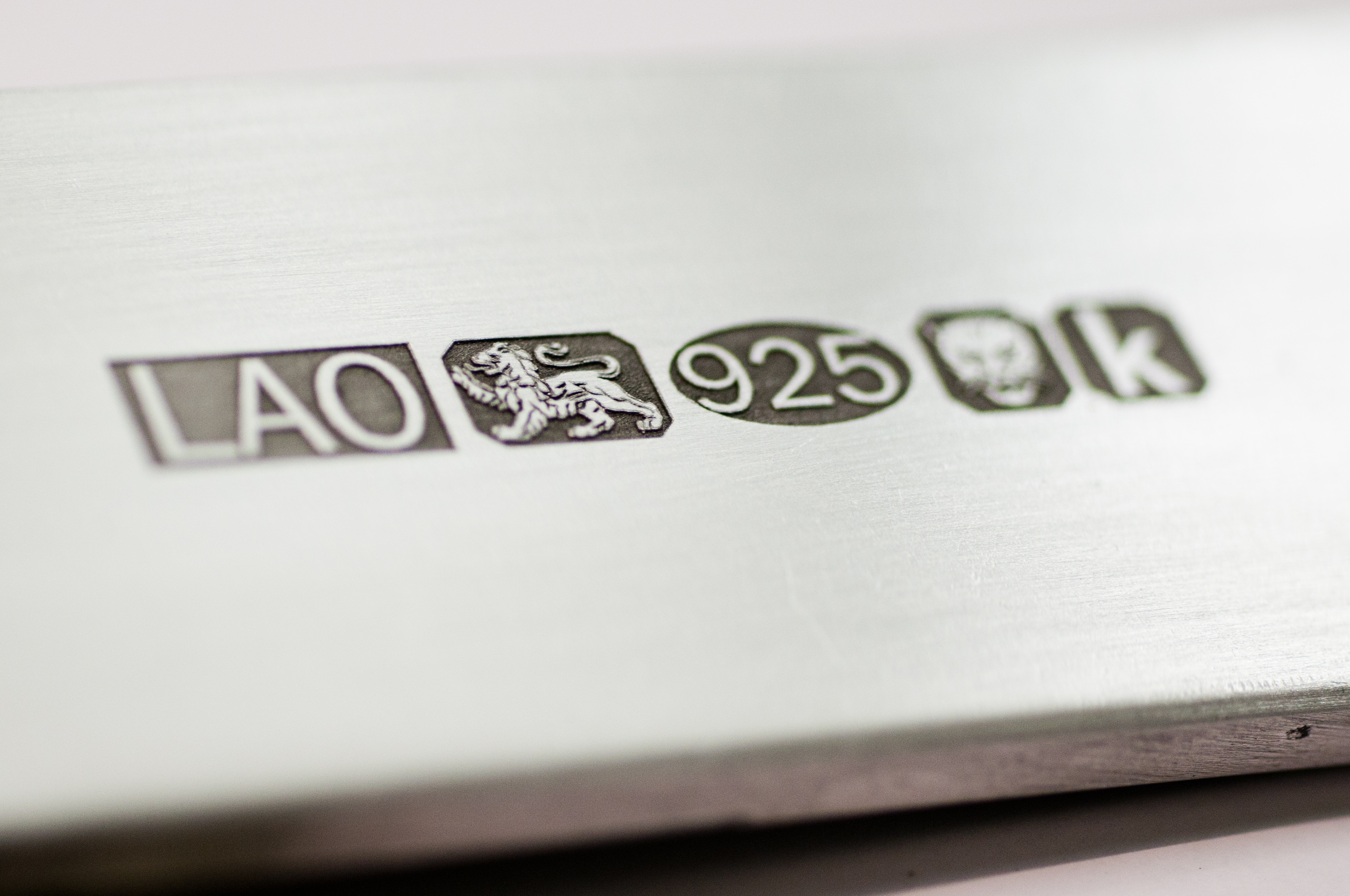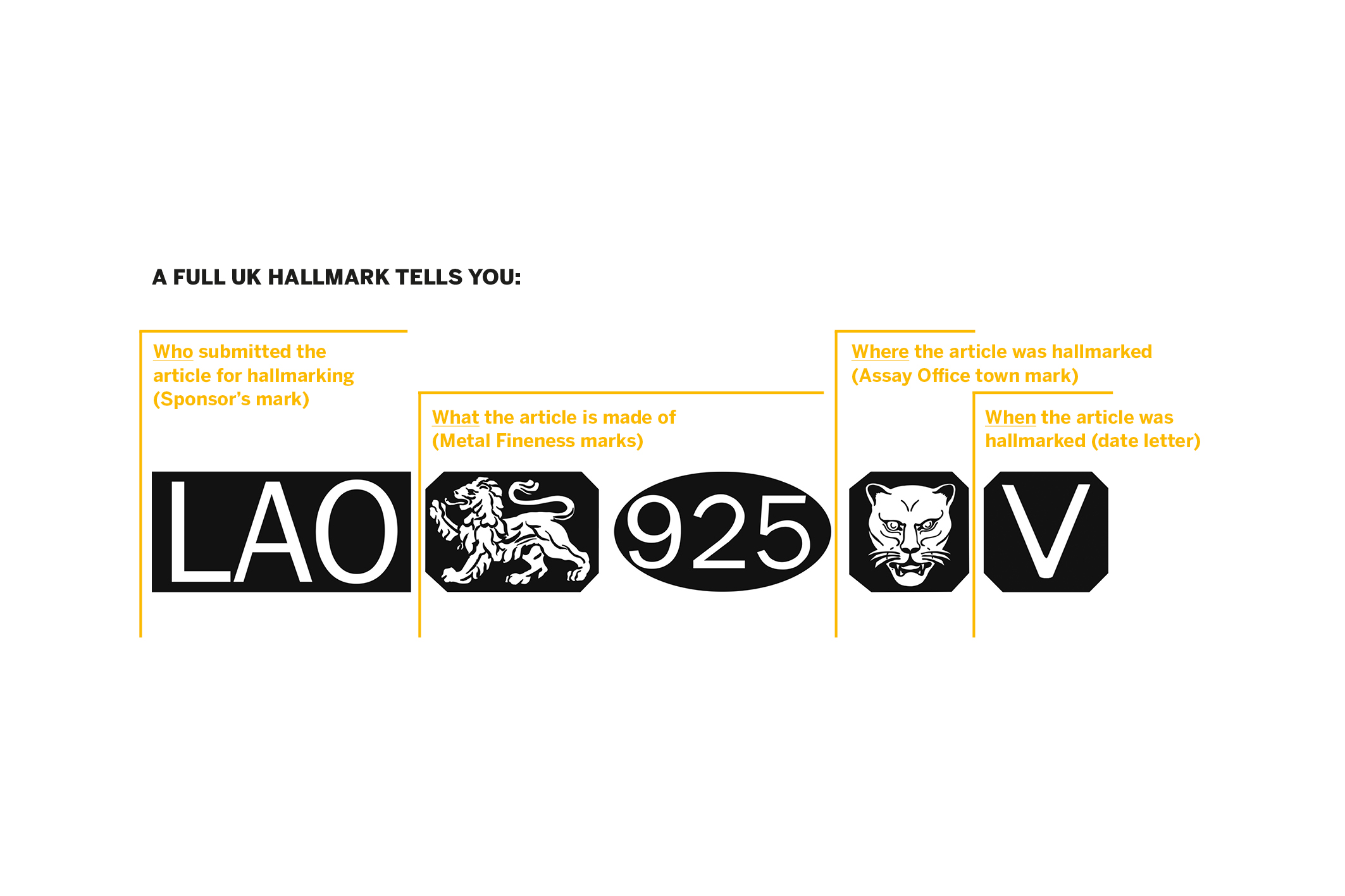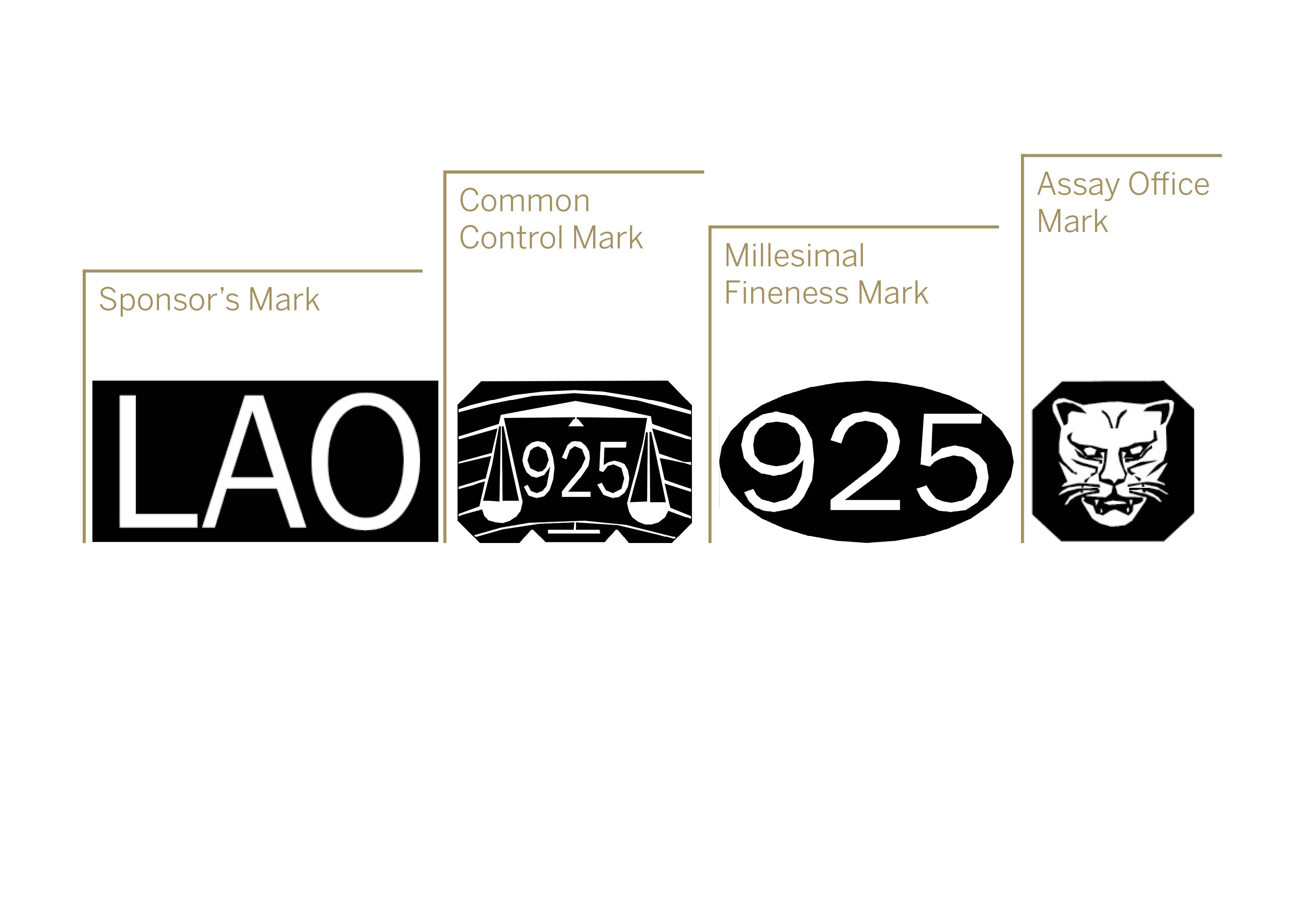All that Glitters is not Gold
Hallmarks are legally required marks applied to precious metals to indicate the amount of pure metal in the alloy. Traditionally applied by striking with a punch, hallmarks are also applied using lasers.

Hallmarks are legally required marks applied to precious metals to indicate the amount of pure metal in the alloy. Traditionally applied by striking with a punch, hallmarks are also applied using lasers.
A hallmark:
The standard hallmark formation is horizontal with minimal spacing between the marks.
Other formations of these hallmarks, often called "bespoke" or "display marks" are available.

The Full Traditional Hallmark comprises five marks:
Unless otherwise stated this is the standard mark we apply.

(Also known as Maker's Mark.) This is the registered mark of the company or person that submitted the article for hallmarking. It comprises of the initials chosen by that person or company inside a surrounding shield shape. The shield shape varies, and a minimum of two, and maximum of five initials must be included.
Every one is unique.
When you register with us, you join a legacy of makers stretching back centuries. Register here.

LAO stands for London Assay Office
The traditional fineness symbol is an optional part of the hallmark but applied as standard at the Goldsmiths' Company Assay Office.

Left to right: Sterling silver, Britannia silver, gold, palladium, platinum
This mark tells you how fine, or what quality, the metal is, as well as indicating the metal type. This numerical format was made compulsory in 1999 and shows the precious metal content of the article, expressed in parts per thousand. We mark a piece to the lowest standard of precious metal, so it guarantees that the quality of the whole article is no less than the fineness indicated.
The shape of the surrounding shield indicates metal type.

Example fineness marks - left to right: platinum, palladium, 18 carat gold, sterling silver
This mark tells you which Assay Office tested and hallmarked the article.
The historic image of the leopard’s head, the town mark for London, and the mark of the Goldsmiths’ Company Assay Office, continues to be internationally recognised as the stamp of approval and guarantee of quality from the renowned home of hallmarking.
The leopard's head mark of London has been used by some of the finest craftsmen in history, on some of the most prestigious and celebrated works.
Read more about our History & Heritage here, the history of the Goldsmiths' Company here and more about the history of Goldsmiths' Hall here.

Left to right: London, Birmingham, Sheffield, Edinburgh.
Display marks can be used as a proud feature to complement the item's design. These cost extra to apply due to the time to plot the hallmarks, and mark the article. Our Standard Price List is available in the downloads section here.
Large hallmarks (above 0.75mm in height on a ring, or 1.5mm in height on any other article) are considered bespoke and display/feature marks.
Scroll through the carousel below for hallmarking arrangements.
Historically, commemorative marks have been added to the regular hallmark to mark special events as shown below.

1935 Silver Jubilee

1977 Silver Jubilee

2002 Golden Jubilee

1953 Coronation Mark

2000 Millennium Mark

2012 Diamond Jubilee
The UK has been a signatory to the The Convention on the Control and Marking of Articles of Precious Metals (known as the Hallmarking Convention) since its inception in 1972.
The Hallmarking Convention is an international treaty between Contracting States, which aims to eliminate trade barriers in the cross-border trade of precious metal articles.
This means that the Goldsmiths’ Company Assay Office can strike the Convention Hallmark which is recognised by all member countries in the International Convention. Conversely, articles bearing the Convention Hallmark (marked in Member states) are legally recognised in the UK and do not have to be re-hallmarked here.
For more information and the current list of member-countries visit the Hallmarking Convention website here.
A Convention Hallmark comprises four marks:

Example of silver convention mark
Finenesses recognised under the Convention are:

Left to Right: Sterling Silver/Palladium 950/18ct Gold/Platinum 950/ Type 2 CCM, to be used in conjunction with Millesimal Fineness mark